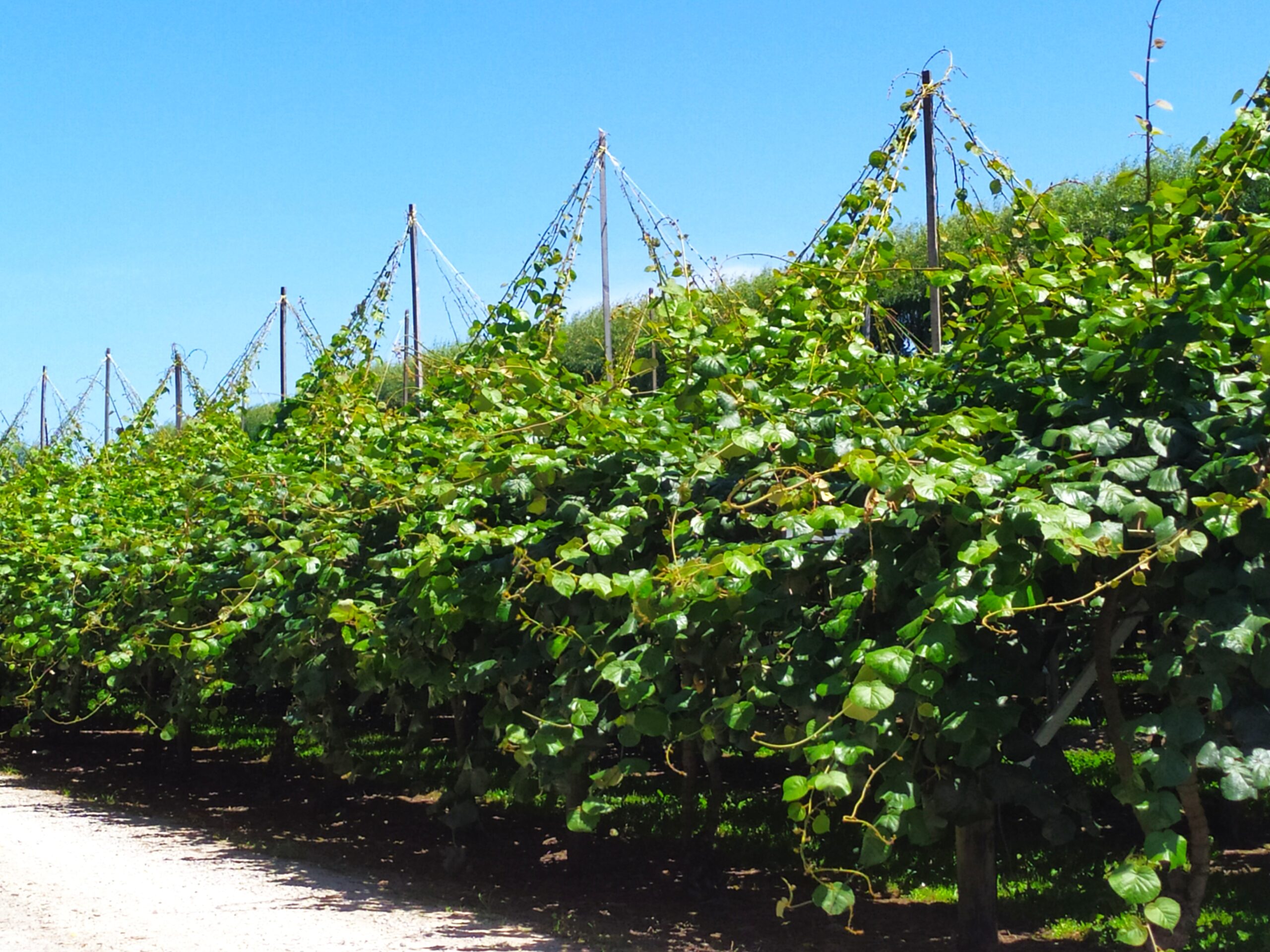IRP AgriForAdapt
High resolution scenarios of adaptation strategies to climate change of agroecosystemsIRP DeReCT
2024-2028
French Coordinator:
Hervé Quenol
LTEG
Australian partner:
Alexander Herzig
Manaaki Whenua Landcare Research
Introduction
Global climate change is having an impact on local climates and, consequently, on agro-ecosystems on a finer scale. In this context, the expected impacts of climate change raise several questions, particularly concerning the adaptation of these systems. Most research into the impact of climate change on agro-ecosystems is carried out on a large scale and results in abrupt adaptation (e.g. disappearance of a type of crop). However, the high spatial variability of climate caused by local factors (e.g. altitude, slope, exposure, distance from a river, etc.) can also lead to high spatial variability of climate over small areas.
Main objectives of research
In this context, prior knowledge of the spatial variability of the local climate and its integration into future climate projections appear to be essential for defining reasoned strategies for adapting agro-ecosystems on a regional scale. The aim of this multidisciplinary project is to produce high spatial resolution scenarios for the adaptation of agro-ecosystems to climate change. The approach consists of :
– WP1 : To produce projections of future climate at high spatial resolution by applying methods based on weather types and climate analogues developed on historical series in order to produce series of future climate data. This work will also be based on a characterisation of the various downscaling methods at several sites in France and New Zealand. The main objectives will be (i) to understand the mechanisms governing climate variability on different time and space scales, and (ii) to produce fine-scale climate series on representative and contrasting study sites.
– WP2 : To quantify the impact of climate change on the phenology of perennial plants where environmental conditions can influence phenology (e.g. hydric or thermal stress for different forest species). Climate projections will be used to model the phenology of several species (e.g. vine, cherry, apple, hop, beech, pine, etc.), taking into account their intraspecific variability (varieties/cultivars). The results will enable us to better characterise the climatic suitability of several species and varieties in certain regions of the two countries.
– WP3 : Spatial assessment of the adaptability of the various agroecosystems studied as a function of climate scenarios and local geographical characteristics, using spatial optimisation models. The aim of the modelling approach is to identify favourable areas for the various species studied as a function of agronomic, climatic and also socio-economic factors.
– WP4 : Defining strategies for adapting territories to climate change by developing Climate-Smart Landscapes (CSL) using multi-criteria geospatial modelling to achieve multifunctional objectives of sustainable production, adaptation to climate change and mitigation of its effects, with biophysical and social trade-offs. The results of Work Packages 1, 2 and 3 will serve as input data for these models. This approach aims to achieve climatic, social and environmental objectives by optimising the configuration and spatial practices of landscapes through the maximisation of co-benefits (production, sustainability) and the minimisation of trade-offs between social, environmental and economic issues. Analysis of these simulations should make it possible to determine the optimum configurations for creating climate-smart landscapes – CSL.
These scenarios will be constructed and applied to pilot sites in France and New Zealand where the current and future impacts of climate change are different. These sites are characterised by a diversity of climatic and geographical conditions, making it possible to explore the methodological constraints for climate analyses and fine-scale spatial modelling techniques for applications to agro-ecosystems and strategies for adapting rural areas to climate change.

XXXXXX

xxxxxx
Institutions and laboratories involved
France
- UMR6554 LETG: This multi-site unit (Nantes, Brest and Rennes) specialises in environmental geography. The project participants are from Rennes (Université Rennes 2) and Brest (Université de Bretagne Occidentale). The unit is contributing its know-how in the field of spatial analysis and modelling of climate on a local scale in the context of climate change (WP1) and spatial analysis methods (WP3) and in multi-agent modelling (WP4). The spatial optimisation model MAUVE (Modélisation de l’Adaptation sUboptimale des Vignobles Emergents et existants) and the multi-agent model SEVE (Simulation des impacts environnementaux sur les écosystèmes viticoles) developed by the unit will be used and developed as part of the IRP AgriForAdapt
- UMR6282 Biogeosciences: The activities of the Centre de Recherches en Climatologie (CRC) team are centred on the regionalisation of observed and simulated climate. The CRC’s work focuses on studies of the impact of climate change using numerical climate modelling on regional and local scales, with considerable expertise in reducing the biases and uncertainties in the output of regionalised climate change models. The modelling carried out as part of the VINADAPT IRP (Pohl et al. 2020; Pohl et al. 2021) will be continued in the AgriForAdapt IRP (WP1).
- UMR5553 LECA: The Alpine Ecology Laboratory aims to understand how ecosystems and biodiversity function. The BIOM (BIOdiversity Monitoring) team will contribute its skills in analysing and modelling the spatio-temporal distribution and dynamics of biodiversity and ecosystems, in particular by developing the ‘Climate Smart Landscape’ concept on French and New Zealand pilot sites.
-
The universities of Rennes 2, Bourgogne Franche-Comté and Grenoble-Alpes are associated with the IRP AgriForAdapt through the attachment of research units.
-
The INRAE partner units come from the ‘Environment and Agronomy’ and ‘Ecology and Biodiversity’ departments. Several units are partners of the IRP AgriForAdapt (see below). Other units will join the project shortly (before December 2023) following the joint linkage call recently launched by INRAE’s international management.
US 1116 AgroClim, INRAe
UMR1287 EGVF
Australia
- Manaaki Whenua – Landcare Research, Dept. ‘Climate Change adaptation and mitigation’ and Dept. ‘Characterising land Resourses’: Landcare Research is the research organisation addressing the ‘environment and biodiversity’ theme via environmental geography and multi-criteria spatial analysis and modelling techniques. The ‘Climate change adaptation and mitigation’ team is working on the development of multifunctional landscapes in New Zealand where climate change mitigation and adaptation are synergistic and provide a range of other ecosystem services (WP4). Several projects in collaboration with the CNRS (UMR LECA) are underway. The ‘Characterising land Resourses’ team is looking at land management and land use, identifying new opportunities for sustainable land use and monitoring the trends and impacts of land use intensification. Spatial analysis methods and tools are developed with this in mind (WP3 and WP4).
- National Institute of Water and Atmospheric Research (NIWA), Dept. ‘Climate’: NIWA is the CRI for the climate modelling teams. Regional climate projections for New Zealand are carried out by NIWA. Collaboration with NIWA will specifically concern WP1 in order to produce fine-scale climate series over the study sites. Various downscaling methods developed by the French and New Zealand partners will be applied to the various study sites. Collaboration with NIWA will provide access to observed and modelled climate data.
- Plant & Food Research, Dept. ‘Cropping, Systems & Environment’: Plant&Food research is CRI’s national agricultural research institute. The ‘Cropping systems and environment’ team is looking at the impact of land use on plant functioning in a context of climate change. The modelling approach used to simulate plant phenology and model farming systems is complementary to that developed by the INRAE teams (WP2).
- New Research Forest Research Institute (SCION), Dept. ‘Managing forestry risk & climate change’: SCION is the IRP specialising in forestry research. The ‘Managing forestry risk & climate change’ team’s approach and methodology are highly complementary to those developed in the AgriForAdapt IRP. The work carried out by SCION on the adaptation of forest areas is integrated into Work Packages 2, 3 and 4, including research into the modelling of forest species growth, the resilience of New Zealand forests to climate change and the development of adaptation strategies for Climate Smart Forests.
